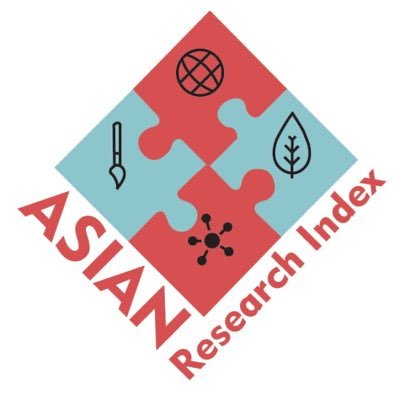Prevalence of De Quervain’s Tenosynovitis and Its Risk Factors Among Weight Lifters
DOI:
https://doi.org/10.55735/g9phxm84Keywords:
De Quervain’s tenosynovitis , Musculoskeletal disorders , Weight lifters , Wrist injuryAbstract
Background: De Quervain’s tenosynovitis is a medical condition that occurs when the tendons of the thumb and wrist become inflamed, painful, and cause difficulty in movement of the wrist and thumb. Objective: To evaluate the prevalence of de Quervain’s tenosynovitis and its associated risk factors among weightlifters. Methodology: This was a cross-sectional study conducted over six months following the submission of the synopsis. Data was collected from two locations: Sultan Fitness Club and the University of Lahore gym. The study involved a total of 123 weightlifters selected using a non-probability purposive sampling technique. Participants included individuals aged 20 to 40 years who engaged in strength training (bodybuilding) at least four times a week, used weights of at least 4 kg, and provided informed consent. Exclusion criteria ruled out individuals with pre-existing wrist injuries, conditions causing distal quadrant tendinitis, any history of hand or wrist trauma or surgery, cervical radiculopathy, or steroid use. The prevalence was measured using the Finkelstein test, and severity was measured with a visual analogue scale. The other variable used to determine the risk factors for de Quervain’s tenosynovitis was measured using a validated questionnaire. After collecting responses through a demographic and structured questionnaire, the data were analyzed, and continuous variables were calculated using means and standard deviations in tabulated form. Ordinal variables were presented using frequency tables. Results: The study included 123 participants, with an average age of 26.37 years, predominantly male (82.9%), and an average height of 166.94 cm and weight of 67.80 kg. 34.1% of participants tested positive for De Quervain’s tenosynovitis, while 48% reported no pain. A majority (78%) engaged in exercises involving heavy wrist movements, and 62.6% took rest days for recovery. Conclusion: The study demonstrates that a significant portion of weightlifters are at risk for De Quervain’s tenosynovitis, with 34.1% testing positive. Key risk factors identified include frequent engagement in heavy gripping exercises, insufficient rest, lack of warm-ups, and the absence of wrist mobility exercises.
Downloads
References
1. Satteson E, Tannan SC. De Quervain tenosynovitis. StatPearls Publishing; 2023.
2. Goel R, Abzug JM. De Quervain’s tenosynovitis: a review of the rehabilitative options. Hand 2015; 10(1): 1–5. DOI: https://doi.org/10.1007/s11552-014-9649-3
https://doi.org/10.1007/s11552-014-9649-3 DOI: https://doi.org/10.1007/s11552-014-9649-3
3. Allbrook V. ‘The side of my wrist hurts’: De Quervain’s tenosynovitis. Australian Journal of General Practice 2019; 48(11): 753–6. DOI: https://doi.org/10.31128/AJGP-07-19-5018
https://doi.org/10.31128/AJGP-07-19-5018 DOI: https://doi.org/10.31128/AJGP-07-19-5018
4. Bae KJ, Baek GH, Lee Y, Lee J, Jo YG. Incidence and Risk Factors for Pregnancy-Related de Quervain’s Tenosynovitis in South Korea: A Population-Based Epidemiologic Study. Clinical Orthopaedics and Related Research 2023; 15(1): 145–52. DOI: https://doi.org/10.4055/cios22099
https://doi.org/10.4055/cios22099 DOI: https://doi.org/10.4055/cios22099
5. Nie X, Huang L, Hou J, et al. Smartphone usage behaviours and their association with De Quervain’s Tenosynovitis (DQT) among college students: a cross-sectional study in Guangxi, China. BMC Public Health 2023; 23(1): 2257. DOI: https://doi.org/10.1186/s12889-023-16808-z
https://doi.org/10.1186/s12889-023-16808-z DOI: https://doi.org/10.1186/s12889-023-16808-z
6. Saadat M. Frequency of De Quervain’s tenosynovitis in carpenters of Lahore. The Healer Journal of Physiotherapy and Rehabilitation Sciences 2021; 1(2): 68–75. DOI: https://doi.org/10.55735/thjprs.v1i2.39
https://doi.org/10.55735/thjprs.v1i2.39 DOI: https://doi.org/10.55735/thjprs.v1i2.39
7. Mandiroglu S, Alemdaroglu E. Idiopathic carpal tunnel syndrome and de Quervain’s tenosynovitis: is there an association? Somatosensory & Motor Research 2021; 38(4): 353–6. DOI: https://doi.org/10.1080/08990220.2021.1986378
https://doi.org/10.1080/08990220.2021.1986378 DOI: https://doi.org/10.1080/08990220.2021.1986378
8. Ashurst JV, Turco DA, Lieb BE. Tenosynovitis Caused by Texting: An Emerging Disease. Journal of Osteopathic Medicine 2010; 110(5): 294–6.
https://doi.org/10.7556/jaoa.2010.110.5.294
9. Magda SM, Darien AE, Abo EL, Enin PD, Mohamed F. Efficacy of Low Level Laser Therapy on De Quervain’s Tenosynovitis after Delivery. The Medical Journal of Cairo University 2021; 89: 1715–9. DOI: https://doi.org/10.21608/mjcu.2021.197223
https://doi.org/10.21608/mjcu.2021.197223 DOI: https://doi.org/10.21608/mjcu.2021.197223
10. Inge P, Orchard JJ, Purdue R, Orchard JW. Exercise after pregnancy. Australian Journal of General Practice 2022; 51(3): 117–21. DOI: https://doi.org/10.31128/AJGP-09-21-6181
https://doi.org/10.31128/AJGP-09-21-6181 DOI: https://doi.org/10.31128/AJGP-09-21-6181
11. Daglan E, Morgan S, Yechezkel M, et al. Risk Factors Associated With de Quervain Tenosynovitis in Postpartum Women. Hand 2023: 15589447221150524. DOI: https://doi.org/10.1177/15589447221150524
https://doi.org/10.1177/15589447221150524 DOI: https://doi.org/10.1177/15589447221150524
12. Rutkowski M, Rutkowski K. Potential effects, diagnosis, and management of De Quervain Tenosynovitis in the aesthetics community: A Brief Review, Case Example, and Illustrative Exercises. J Clin Aesthet Dermatol 2023; 16(9 Suppl 2): S28–S31.
13. Karlıbel İA, Aksoy MK, Alkan A. Paraffin bath therapy in De Quervain’s tenosynovitis: a single-blind randomised controlled trial. International Journal of Biometeorology 2021; 65(8): 1391–8. DOI: https://doi.org/10.1007/s00484-021-02111-2
https://doi.org/10.1007/s00484-021-02111-2 DOI: https://doi.org/10.1007/s00484-021-02111-2
14. Aw T, Ahmed S, Choudat D, Cullinan P, Eglite M, Foa V. Information notices on occupational diseases: a guide to diagnosis. Luxembourg, Office for Official Publications of the European Communities 2009.
15. Grgic J, Schoenfeld BJ, Davies TB, Lazinica B, Krieger JW, Pedisic Z. Effect of resistance training frequency on gains in muscular strength: a systematic review and meta-analysis. Sports Medicine 2018; 48(5): 1207–20. DOI: https://doi.org/10.1007/s40279-018-0872-x
https://doi.org/10.1007/s40279-018-0872-x DOI: https://doi.org/10.1007/s40279-018-0872-x
16. Keogh JW, Winwood PW. The epidemiology of injuries across the weight-training sports. Sports Medicine 2017; 47(3): 479–501. DOI: https://doi.org/10.1007/s40279-016-0575-0
https://doi.org/10.1007/s40279-016-0575-0 DOI: https://doi.org/10.1007/s40279-016-0575-0
17. Kuo Y-L, Hsu C-C, Kuo L-C, et al. Inflammation is present in de Quervain disease-correlation study between biochemical and histopathological evaluation. Annals of Plastic Surgery 2015; 74: S146–S51. DOI: https://doi.org/10.1097/SAP.0000000000000459
https://doi.org/10.1097/SAP.0000000000000459 DOI: https://doi.org/10.1097/SAP.0000000000000459
18. Andréu J-L, Otón T, Silva-Fernández L, Sanz J. Hand pain other than carpal tunnel syndrome (CTS): the role of occupational factors. Best Practice & Research Clinical Rheumatology 2011; 25(1): 31–42. DOI: https://doi.org/10.1016/j.berh.2010.12.001
https://doi.org/10.1016/j.berh.2010.12.001 DOI: https://doi.org/10.1016/j.berh.2010.12.001
19. Aneeqa A, Amna T, Fatima M, et al. Prevalence of De Quervain’s Tenosynovitis Among Weightlifters: Prevalence of De Quervain’s Tenosynovitis. Journal of Health and Rehabilitation Research 2024; 4(3): 1–5. https://doi.org/10.61919/jhrr.v4i3.1388 DOI: https://doi.org/10.61919/jhrr.v4i3.1388
20. Saha A. Prevalence of De-Quervain’s Tenosynovitis among the Tailors in Dhaka, Bangladesh: Bangladesh Health Professions Institute, Faculty of Medicine, the University 2023.
21. Brahmane P, Jadhav T, Jerome A. Prevalence of De Quervain’s Tenosynovitis in Male Hairdressers of Southern Pune. International Journal of Health Sciences and Research 2024; 14(4): 420-425. DOI: https://doi.org/10.52403/ijhsr.20240455
https://doi.org/10.52403/ijhsr.20240455 DOI: https://doi.org/10.52403/ijhsr.20240455
22. Rutkowski M, Rutkowski K. Potential effects, diagnosis, and management of De Quervain Tenosynovitis in the aesthetics community: A brief review, case example, and illustrative exercises. The Journal of Clinical and Aesthetic Dermatology 2023; 16(9 Suppl 2): S28-S31.

Downloads
Published
License
Copyright (c) 2025 The Healer Journal of Physiotherapy and Rehabilitation Sciences

This work is licensed under a Creative Commons Attribution 4.0 International License.














